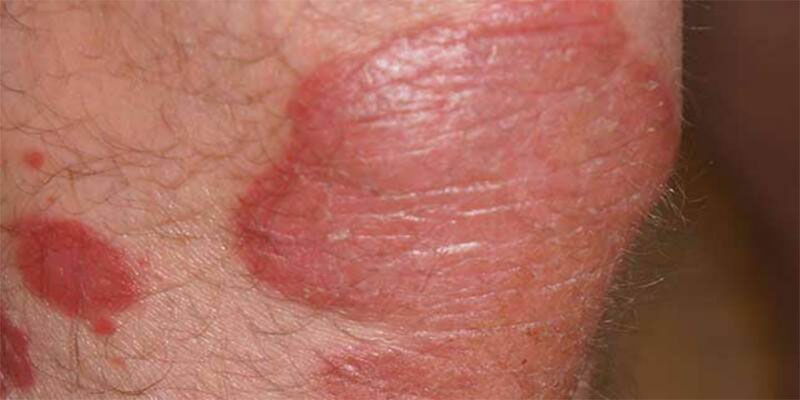What You Should Think About Symptoms Of Plaque Psoriasis
Oct 23, 2023 By Madison Evans
Plaque psoriasis is the most prevalent form of the disease and is characterized by the development of painful, itchy, red, elevated, and scaly areas of skin. The Mount Sinai Dermatology Department is at the forefront of research into better treatments for plaque psoriasis. Mount Sinai has been at the forefront of developing novel topical, oral, and biological therapeutics for Plaque Psoriasis Symptoms. Our research, treatments, and publications in this area have earned us international acclaim. Psoriatic arthritis may occur in up to 40% of people with plaque psoriasis. Our Department is uniquely positioned to function as a "one-stop shop" for patients experiencing psoriatic illness since we are the only facility in New York State with doctors who are board certified in rheumatology and dermatology.
What Precisely Is Chronic Plaque Psoriasis?
Most people with psoriasis have a form called chronic plaque psoriasis. It appears as discrete, red, scaly, thickened patches of skin ranging in size from very tiny to very big. However, it may appear anywhere in the body and most often affects the elbows, knees, and lower back. This psoriasis is often more long-lasting or chronic, and although it responds well to therapy, it is challenging to remove it with topical therapies alone. Large, flat regions (plaques) of psoriasis covered in the characteristic silvery scale are a hallmark of this condition. These plaques can combine forces and spread across large skin sections, especially on the trunk and the limbs. As a result, psoriasis of the scalp and nails often occurs simultaneously.
What Makes Plaque Psoriasis Happen?
It's an immune system problem," Dr. Sunil Tolat explained. Plaque psoriasis occurs when the immune system overreacts, resulting in inflammation that spurs the rapid proliferation of new skin cells. Every 28-30 days, your skin generates brand-new cells. On the other hand, those with plaque psoriasis have new skin cells that sprout and migrate to the skin's surface every 3 to 4 days. Plaques develop when new cells continually replace dead ones. It is also possible that a hereditary predisposition is at play in the development of plaque psoriasis, which is why the condition often manifests itself in families. It might be something handed down from parents to offspring.
Symptoms
The raised, irritated, and scaly areas of skin caused by psoriasis are often unpleasant and uncomfortable. Plaques on Caucasian skin often manifest as elevated, red spots covered with a silvery-white accumulation of dead skin cells or scale. Plaques may be deeper and thicker and seem more purple or gray, or darker brown on people of color's skin. Plaques are most common on the scalp, knees, elbows, and trunk, although they may occur anywhere. To a large extent, plaques affect the same body parts on both the right and left sides.
Diagnosis
Most cases of plaque psoriasis may be diagnosed after a consultation with a dermatologist (skin doctor) who asks about your symptoms and examines your skin. But psoriasis is hard to diagnose because it may resemble eczema and other skin conditions. A biopsy is a diagnostic procedure your doctor may recommend in certain circumstances. A little piece of skin will be removed to examine cells closely.
Psoriasis comes in several different forms, each with its own unique set of symptoms:
Plaque Psoriasis.
Plaque psoriasis is the most prevalent form of the skin condition, and it manifests as red, scaly areas of skin that are dry and itchy. They may be few, or they could be numerous. Elbows, knees, lower back, and the scalp are frequent locations for these sores. According to the patient's skin tone, the patches are different colors. In the case of people with brown or Black skin, the healing process may be accompanied by transitory color changes (post-inflammatory hyperpigmentation).
Scabies Or Psoriasis Of The Nails

Fingernails and toenails may be affected by psoriasis, leading to pitting, irregular nail development, and discoloration. Separation of the nail plate from the nail bed is a possible symptom of psoriatic disease (onycholysis). Nail fragility might be a sign of a serious illness. Psoriasis guttate. Those in their 20s and 30s and kids are at the most risk for developing guttate psoriasis. A bacterial illness, most often one caused by
Occlusive Psoriasis
The skin folds of the groin, buttocks, and breasts are particularly vulnerable to inverse psoriasis. It manifests as red, inflammatory spots on the skin that get worse with friction and sweat. Fungal infections sometimes bring on this kind of psoriasis.
Psoriasis With Pustules
Rarely seen pustular psoriasis presents as well-defined pus-filled blisters. It shows in large, uniform regions or pinpoint spots on the palms and soles.
Psoriasis With Red, Itchy Patches On The Skin Is Called Erythrodermic

Even though it's the rarest form of the disease, erythrodermic psoriasis may cause a painful, itchy rash that spreads over your whole body. Its duration might be either relatively brief (acute) or more protracted (chronic).
Conclusion
The knees, elbows, trunk, and scalp are commonly affected by psoriasis. Psoriasis is widespread, lasts for a very long time (chronically), and there is no treatment for it. The condition is often uncomfortable, disrupts sleep, and makes it difficult to focus. As a rule, the ailment follows cyclical patterns, worsening for a time, then becoming better, before flaring again. People with a family history of psoriasis may have flare-ups when exposed to particular environmental or medical stressors, such as an infection, a cut or burn, or a drug. There are treatments available to assist with symptom management. You may improve your quality of life with psoriasis by changing your lifestyle and using coping mechanisms.







